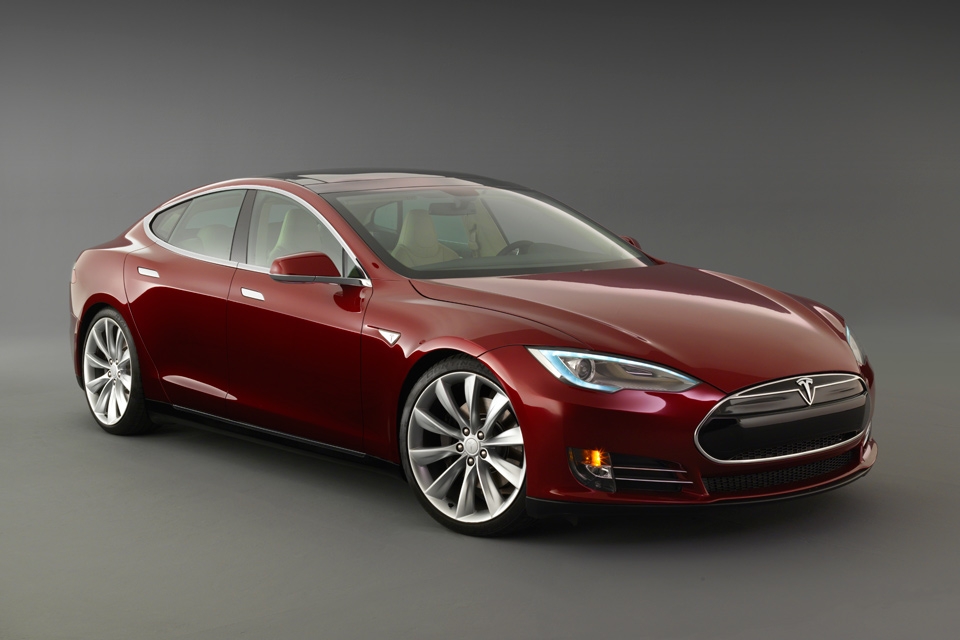As for the Debate…Tesla Motors and Powering a Frontier
It hardly comes as a surprise that the issue of space exploration was not mentioned in the first U.S. Presidential debate on Wednesday evening, and after the dismissive treatment it was given in a prior Republican debate, that might not be a bad thing.
The closest approach was probably Mitt Romney’s mention of Tesla Motors, incorrectly lumped in with Solyndra and Fisker as “loser” examples of the type of green energy programs which have drawn sharp, and in some cases, justifiable criticism.
Tesla, which started with the limited production, $100,000 plus Roadster, began shipping the somewhat more affordable Model S only this past June. The company is currently working through supply bottlenecks as it attempts to ramp up production and fill customer orders, but it has never missed a payment, and is on a path to profitability. Whether Tesla is ultimately successful in reaching a tipping point in developing a mass-produced electric car that appeals to a wider market is yet to be seen. However, if subsequent models, based on the S, are priced to present a reasonable alternative to the mid range consumer, it might just succeed.
In any event, the future of Tesla, as well as other electric car ventures should be of some interest to those whose passions lie elsewhere, particularly if it happens to be in space.
There is of course the obvious link between SpaceX and Tesla, (Elon Musk) which along with Solar City form a sort of three-part vision of the future. There is also however, a practical link which is worthy of consideration for anyone with a stake in the expansion of space exploration, commerce and ultimately settlement. Quite simply, the prospects for an inner solar system bustling with human civilization are very much dependant on developing and refining the most efficient methods for capturing, storing and releasing energy to do useful work, most of which will come from solar power.
We may be a very long way from a frontier vision of individual homesteads and small communities dotting the surface of the Moon and Mars, or mining ventures on asteroids, but it seems abundantly clear that we are also much, much further from such a future, if it depends on the widespread distribution of nuclear power sources.
Consequently, along with affordable access to space based on rapidly reusable launch vehicles, one of the critical enabling infrastructure requirements for establishing a permanent and growing human and robotic presence in the inner solar system is a lightweight and expandable electrical storage and distribution system which allows us to do the hard work of harvesting and converting raw materials into the fuel, air, water and materials necessary to survive, trade and prosper.
And thus the link to electricity and the American automobile. With its vast network of interstates and local highways, county roads and gravel paths, the American road system presents a daunting challenge to the all-electric autombile. In order to be fully adopted, not just in concentrated metro areas on the East and West coasts, but also on the long stretches of highway which connect cities and towns in the interior, manufacturers will need to overcome the difficulties of producing a vehicle which can manage greater distances and higher sustained speeds than currently demonstrated. And with air conditioners blasting through summerlike conditions which can last most of the year. Nevertheless, with the current Model S receiving strong reviews, progress is demonstrable in an industry which is only just now reaching the starting line.
While the specific solution in use by Tesla and other manufactures, lithium-ion batteries, may not the best energy storage answer for long term space and planetary applications, (the Dragon capsule uses somewhat different lithium polymer batteries), the progressive development of more capable systems for electric automobiles on Earth are likely to have a huge impact off world anyway due to the potential size of the market.
It seems reasonable then, that at whatever point all-electric vehicles assume a meaningful position in what will still remain a mixed solution of gasoline, diesel and hybrid vehicles, the American consumer will begin literally driving one of the key technologies necessary to enable exploration and settlement in the inner solar system.



1 Comment on "As for the Debate…Tesla Motors and Powering a Frontier"
Trackback | Comments RSS Feed
Inbound Links